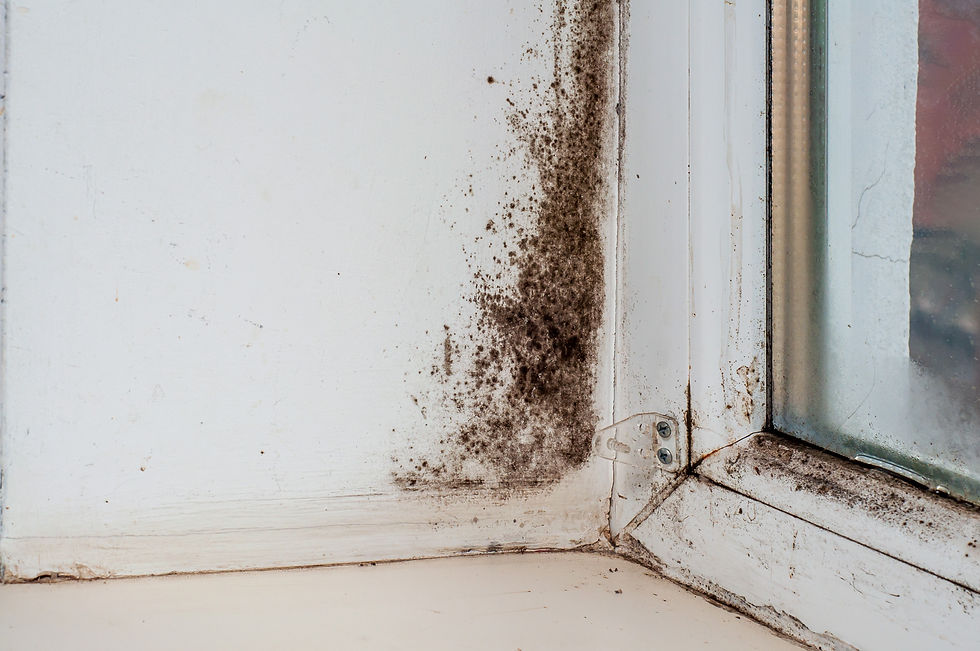Winter's bugs - Norovirus
- Cleenol
- Oct 16, 2022
- 3 min read
Norovirus causes diarrhoea and vomiting and is one of the most common stomach bugs in the UK. It's also called the 'winter vomiting bug' because it's more common in winter, although you can catch it at any time of the year.
Norovirus can be very unpleasant but usually clears up by itself in a few days.
Symptoms of norovirus:
▪ suddenly feeling sick
▪ projectile vomiting
▪ watery diarrhoea
Some people also have a slight fever, headaches, painful stomach cramps and aching limbs.
How is norovirus spread?
Norovirus spreads very easily in public places such as hospitals, nursing homes and schools. You can catch it if small particles of vomit or stools (poo) from an infected person get into your mouth through:
▪ close contact with someone with norovirus who may breathe out small particles of the virus that you then inhale.▪ touching contaminated surfaces or objects, as the virus can survive outside the body for several days.▪ eating contaminated food, which can happen if an infected person doesn't wash their hands before preparing or handling food.
Preventing norovirus
It's not always possible to avoid getting norovirus but, following the advice below can help stop the virus spreading.
You should:
▪ stay off work or school until at least 48 hours after the norovirus symptoms have stopped.
▪ avoid visiting anyone in hospital during this time.
▪ wash your hands frequently and thoroughly with soap and water particularly after using the toilet and before preparing or handling food.
▪ be aware alcohol-based hand gels don't kill the virus.
Maintain basic hygiene and cleaning to help stop the spread of norovirus by:
▪ disinfecting any surfaces or objects that could be contaminated, using a 0.1% bleach-based household cleaning solution (1000 ppm available chlorine).
▪ washing any items of clothing or bedding that could have become contaminated separately on a hot wash (60 °C) to ensure the virus is killed.
▪ not sharing towels and flannels.
▪ flushing any poo or vomit in the toilet and cleaning the surrounding area with a bleach-based household cleaner.
▪ avoiding eating raw, unwashed food.
▪ only eating oysters from a reliable source as they can carry norovirus.
Cleenol's Sanitizing Tablets (062534/6 – 6 x 180 tabs) and High Power Sanitizing Tablets (0625CHL/6 – 6 x 200 tabs) provide a simple, cost-effective solution for disinfection of areas where people affected with norovirus have been. Including cleaning of touch points and areas that may have been contaminated with vomit or other body matter.
Both the Sanitizing Tabs and High Power Sanitizing Tablets are based on a dry chlorine donor – Sodium Dichloroisocyanurate (NaDCC or Troclosene Sodium).
This results in a safer, highly convenient and more accurate alternative to traditional liquid hypochlorite bleach. These tablets dissolve quickly with an effervescent action, giving a ready to use chlorine-based solution in under 5 minutes.
The main differences between these two products are the size of the tablet and the amount of active ingredient contained within the product:
▪ Sanitizing Tablets = 1.1g (0.5g NaDCC)
▪ High Power Sanitizing Tablets = 3.25g (1.7g NaDCC)
For disinfecting areas against Norovirus, a 0.1% solution of bleach is recommended. This means that there are 1000 parts per million (ppm) available chlorine molecules in the solution. Traditional bleach-based cleaners can be hard to accurately dilute to the correct concentration, as the dilution rates will vary depending on the strength of the initial product.
However, for High Power Sanitizing Tablets it is very simple to dose to 1000 ppm:
Dose Rate for 1000 ppm = 1 High Power Sanitizing Tablet per Litre of clean water
Below are a few examples of dose rates to give a concentration of 1000 ppm:
Number of Tablets | Volume of Water | Contact Time |
1 | 750 ml | 15 mins |
1 | 1 L | 15 mins |
3 | 3 L | 15 mins |
5 | 5 L | 15 mins |
Sanitizing Tablets, are similarly easy to dose to 1000 ppm, simply requiring a large dose rate for an equivalent volume:
Number of Tablets | Volume of Water | Contact Time |
3 | 750 ml | 15 mins |
4 | 1 L | 15 mins |
10 | 3 L | 15 mins |
17 | 5 L | 15 mins |
For additional dose rates and alternative uses, please see the Product Use Guides for each product.



